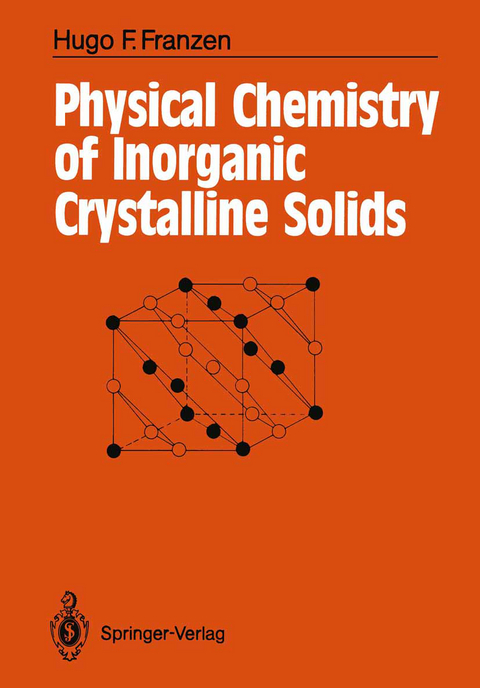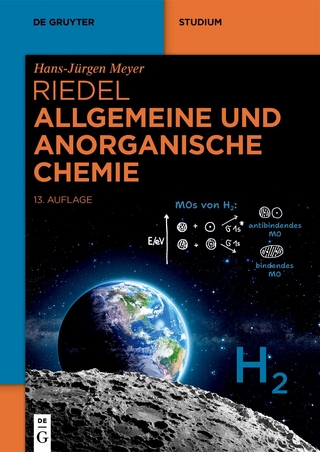
Physical Chemistry of Inorganic Crystalline Solids
Springer Berlin (Verlag)
978-3-642-71239-5 (ISBN)
I. Introduction.- I.1 Motivation.- I.2 Brief Overview of Traditional Solid-State Concepts.- I.3 Models of Interactions in Solids.- I.4 Problems.- II. Space Lattice Symmetry.- II.1 Introduction.- II.2 Translational Periodicity.- II.3 Symmetries bf Plane Lattices.- II.4 Space Lattices from Stacking of Plane Lattices.- II.5 Problems.- III. Space Group Symmetry.- III.1 Introduction.- III.2 Proper and Improper Rotations.- III.3 Combination of Rotations and Translations.- III.4 Screw Axes and Glide Planes.- III.5 Combination of Symmetry Operations.- III.6 Problems.- IV. A Brief Sampling of Some Inorganic Structure Types.- IV. 1 Introduction.- IV.2 NaCl-Type.- IV.3 NbO-Structure.- IV.4 WC-Type.- IV.5 NiAs-Type.- IV.6 CsCl-Type.- IV.7 ZnS-Type.- IV.8 CaF2-Type.- IV.9 The ReO3 Structure.- IV.10 The Layered Dichalcides.- IV.11 Perovskite.- IV.12 ?-Al3O3.- IV.13 Rutile (TiO2).- IV.14 The W3O or A15 Structure.- IV.15 Metal-Rich Structures.- IV.16 Oxide Structures Based on ReO3.- IV.17 Problems.- V. Thermodynamics.- V.1 Introduction.- V.2 Basic Concepts and Assumptions.- V.3 The Gibbsian Equation for dU.- V.4 The Phase Rule.- V.5 Condition for Heterogeneous Equilibrium.- V.6 Components and Species, Chemical Equilibrium.- V.7 Some Equations of Use in the Consideration of Heterogeneous Equilibria....- V.8 Thermodynamics of Nonstoichiometry.- V.9 Stability and Instability with Respect to Disproportionation.- V.10 Thermodynamics of Defects.- V.11 Phase Diagrams.- V.12 Defect Ordering.- V.13 Problems.- VI. Reciprocal Space and Irreducible Representations of Space Groups.- VI.1 Introduction.- VI.2 Reciprocal Lattice.- VI.3 Reciprocal Space.- VI.4 Irreducible Representation of Space Groups.- VI.5 Problems.- VII. Second-Order Phase Transitions.- VII.1 Introduction.- VII.2 Thermodynamics ofSecond-Order Phase Transitions.- VII.3 Landau Theory (Without Symmetry).- VII.4 Landau Theory, With Consideration of Symmetry, Applied to the NiAs-Type to MnP-Type Phase Transition.- VII.5 General Development of the Landau Theory With Consideration of Symmetry.- VII.6 Landau's 4th Condition.- VII.7 Problems.- VIII. Diffraction by Crystalline Solids.- VIII.1 Introduction.- VIII.2 Diffraction.- VIII.3 Miller Indices.- VIII.4 Structure Factor.- VIII.5 Extinctions.- VIII.6 Order-Disorder and Superstructure.- VIII.7 Incommensurate Ordered Superstructure.- VIII.8 Electron Density and Diffraction.- VIII.9 Problems.- IX. Order-Disorder Transition and Disordered Structures.- IX.1 Introduction.- IX.2 CsCl-Type to bcc-Type.- IX.3 CdCl2-Type to NaCl-Type.- IX.4 Incommensurate Ordering in Sc1-xS.- IX.5 CdI2-Type to NiAs-Type.- IX.6 Vacancy Ordering in a Few Defect NaCl-Type Solids.- IX.7 Vacancy Ordering in Defect Cr1-xS.- IX.8 The TimSn Intermediate Sulfides of Titanium.- IX.9 Shear Structures.- IX.10 Summary.- IX.11 Problems.- X. The Electronic Structure of Crystalline Solids.- X.1 Introduction.- X.2 Band Theory.- X.3 The Nearly Free Electron Model of Band Structure.- X.4 Conclusion.- X.5 Problems.- References.
| Erscheint lt. Verlag | 1.11.2011 |
|---|---|
| Zusatzinfo | IX, 158 p. |
| Verlagsort | Berlin |
| Sprache | englisch |
| Maße | 170 x 244 mm |
| Gewicht | 308 g |
| Themenwelt | Naturwissenschaften ► Chemie ► Anorganische Chemie |
| Naturwissenschaften ► Chemie ► Physikalische Chemie | |
| Naturwissenschaften ► Physik / Astronomie ► Festkörperphysik | |
| Technik ► Maschinenbau | |
| Schlagworte | Chemistry • Crystal • crystallography • crystal structure • Physical Chemistry • Structure • thermodynamics |
| ISBN-10 | 3-642-71239-8 / 3642712398 |
| ISBN-13 | 978-3-642-71239-5 / 9783642712395 |
| Zustand | Neuware |
| Haben Sie eine Frage zum Produkt? |
aus dem Bereich


